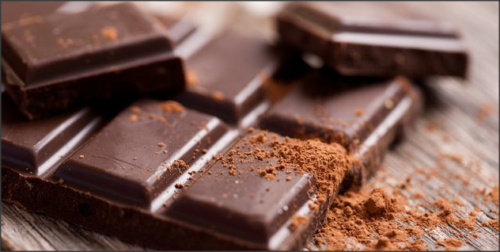Fears cacao plants will no longer exist by 2050 because of climate change
If you have noticed that high street shops are already stocking up on Easter eggs you may well ask whether that is just the required sales and marketing activity at this time of year (e.g. Xmas ads in November!) or something more worrying. Figures from the National Oceanic and Atmospheric Administration show our accelerated rate of climate change is on course to decimate global cacao plants and therefore the world’s supply of chocolate. Cacao is a fragile, sensitive plant that usually only grows in rainforests close to the equator and a geographic study of these cultivation areas reveals that they are typically 300 to 850 feet above sea level. The higher temperaures that come with climate change will dry the soil and disrupt this growth process so that by 2050 cacao plant cultivation will be all but impossible.
Environmentalists say a temperature increase of just 2.1 degrees centigrade in West Africa (where 50% of the world’s cacao is grown) can throw the delicate balance of the humidity, heat and rain out of sync. Farmers in Ghana and the Ivory Coast have the option of moving to mountainous areas to counterbalance climate change but they are now used as wildlife preserves. The cacao grown in the Caribbean, Australia and India is no match for the volumes in West Africa so this is where scientists are focused.
Green concerns have become a double-edged sword. These poor farmers  often use traditional methods on these subsistence farms that have barely changed in a 100 years. The good news is they rarely use the harmful modern pesticides and chemical fertilizers feared by the health-conscious. Yet it is these same chemical-loaded modern farming methods which can increase harvests and therefore offset the loss from climate change. The farming industry needs to consider a new approach, which covers both the yield and health concerns.
often use traditional methods on these subsistence farms that have barely changed in a 100 years. The good news is they rarely use the harmful modern pesticides and chemical fertilizers feared by the health-conscious. Yet it is these same chemical-loaded modern farming methods which can increase harvests and therefore offset the loss from climate change. The farming industry needs to consider a new approach, which covers both the yield and health concerns.
Chocolate manufacturer Mars has turned to CRISPR gene-editing technology in the hopes of designing a cacao plant that can grow in less humid, less hilly environments and is resistant to viral disease and fungi. They are working with scientists from the University of California with expertise in this controversial field.
However, the majority of chocolate manufacturers agree that more must be done as they are already feeling the pinch. Cacao production is low and prices up, with drought and Ebola around West Africa in recent years adding to climate change concerns. To make things worse global chocolate consumption is actually increasing, particularly in India and China who both have billion plus populations. Health-conscious westerners who seek the antioxidant benefits of dark chocolate are also pushing up demand. The inability to meet this demand will be felt around 2020 well before climate change makes its mark.





